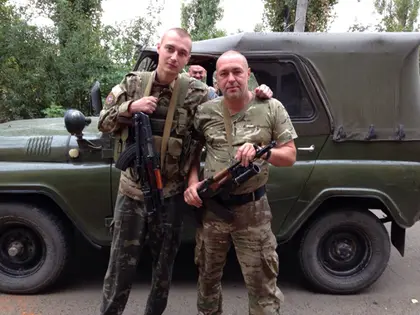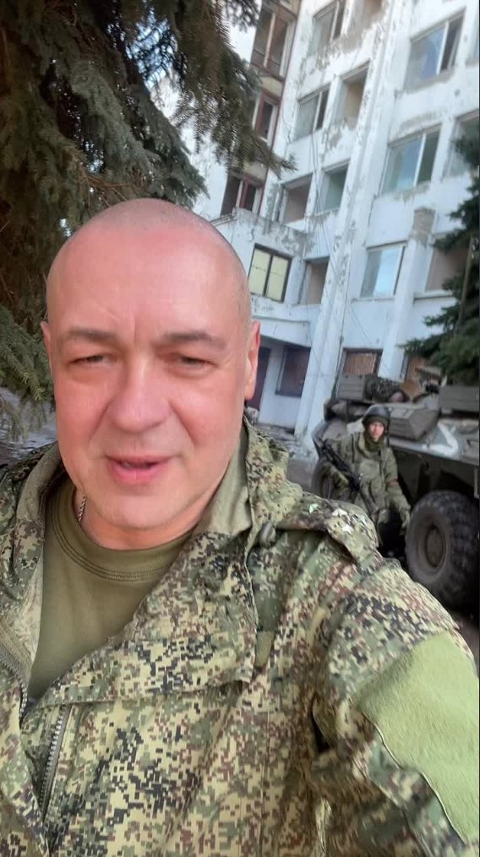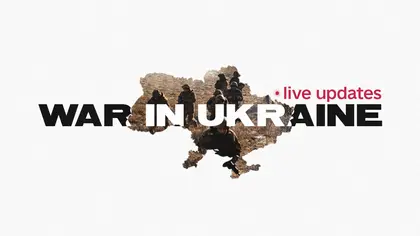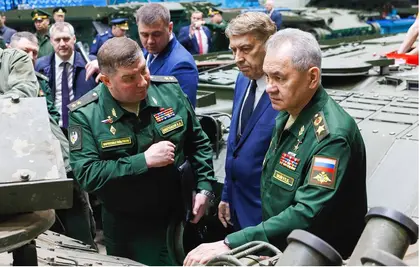As the video scans across a cold, dreary March afternoon, snow and mud can be seen covering the ground before the cellphone’s camera focuses on seven Ukrainian soldiers’ lifeless bodies. A Russian voice narrates that the dead men will not be going anywhere and cracks into laughter while joking about the fate of the deceased men. The names of the soldiers, or the owner of the voice narrating the video, are not revealed. The bodies, arranged in unnatural positions, immediately caught the trained eye of “KremlinTrolls,” the preferred pseudonym of a pro-Western OSINT investigative journalist, as he scoured pro-Russian Telegram channels for atrocities and Kremlin propaganda which he has been exposing to the public since Russia first invaded Ukraine in 2014.
Open Source Intelligence, commonly referred to as “OSINT,” is the analysis of data gathered from open sources to produce actionable intelligence which has been crucial during the war in Ukraine. Today, the international OSINT community, composed largely of Americans and Europeans, is actively assisting Ukrainian war efforts by browsing the web to identify Russia’s troop movements, weapons they have deployed, and war crimes that they have committed. Even if not full-time professionals, it is hard to overestimate the value that OSINT plays in modern intelligence gathering.
US Senator Marco Rubio, the most senior Republican on the Select Committee on Intelligence, wrote a day after Russia began to invade Ukraine: “…respect to the international online #OSINT community, many of whom may not realize how much of their geolocation & vetting of videos & satellite imagery is integrated into the broader work of the intelligence community.”
MP Valentyn Nalyvaichenko, who headed the Security Service of Ukraine (SBU) from 2006-2010 and 2014-2015, said to the Kyiv Post that he agreed with Rubio’s assessment and that “open source intelligence plays an important role in defending Ukraine.” Nalyvaichenko continued that “those who support open-source intelligence operations deserve to be thanked for the hard, yet vital, work that they do to support Ukraine’s national security.”
Those who participate in the OSINT community come from diverse backgrounds, have rarely worked in the formal governmental intelligence community, and typically focus on defined ‘niches’.
“Evergreen Intel,” who usually tracks airplanes and military technology, says she never formally studied OSINT, but her Bachelor of Arts in Environmental Geology, with a focus on water resources, has proven useful in geolocating photos and video in the past as it helps to understand what is going on in the source material.” However, she observes that most of the knowledge which she applies while sleuthing for answers comes from “reading a lot of material when I was younger,” which has given her the added benefit of being known as an excellent writer of the intelligence she uncovers.
The key to the intelligence collected, says “OSINTtechnical, is that ” “OSINT allows us to fill in the gaps that traditional media sometimes misses, while also relying on the groundwork done by that same traditional media. OSINT, due to its nature, relies on a good community, and everyone is very open in their work.”
She is always on the lookout for clues, says “Evergreen Intel,” and on the hunt for something that will “contribute to the conversation.” When something novel has piqued her interest, she quickly follows-up by further analysis with “Google Earth, the Sentinel EO commercial browser, flight tracking apps, and a variety of other resources” – a process that can glue her to her computer or phone for up to twelve hours a day. However, this process has at times allowed her to uncover information that was not just news breaking, but of direct importance to national security.
“Spook_info” relayed a similar message: OSINT could be incredibly time consuming and feel as if it were never ending – however he recognized that it was a tangible way in which he could contribute to strengthening Ukraine’s national security against brutal Russian aggression.
“UkrainesGrains,” an OSINT account primarily seeking to assist in “moving grains and wheat to accessible ports around Russia’s coastal blockade,” relates that he is a newcomer to the OSINT world, but that he was outraged by the “business as usual” attitude of Europe regarding “the gravity for Ukraine as an invaded nation if the electric grid ‘fell’ and Ukraine ‘went dark.’”
Understanding that the protection of the power grid as being of tantamount importance, “UkrainesGrains” initially relied on his decades of professional experience as an energy infrastructure expert, and began to team people together to find solutions to defend Ukraine. Today, he has broadened his scope to include increasing the throughput of fuel, military, and humanitarian aid into Ukraine.
Frustrating as it may be, often hours of detailed investigations do not result in a tangible outcome for the OSINT aficionado. However, the video that KremlinTrolls discovered of the killed Ukrainian soldiers, does have a valuable conclusion.
When Henry Bolton, a retired British soldier and police officer who investigated war crimes for the International Criminal Tribunal for the former Yugoslavia (ICTY), and who won an Order of the British Empire (OBE) for his contribution to international security saw the video of a Russian laughing over the dead bodies of Ukrainian soldiers, he said that there were “very solid reasons why it must be investigated, and the International Criminal Court must see it.”
Initially, KremlinTrolls and others in the OSINT community sought to locate where the video of abused dead Ukrainian POWs, first posted to a pro-Russian Telegram channel on March 22, had been filmed. After initial investigations failed to establish the location, a Ukrainian OSINT investigator, “Vovapolslova,” spent over a week searching online maps of Ukraine’s streets before he was able to confirm that the location of the video was within the Russian-occupied Luhansk region of Ukraine.
Shortly thereafter, Julien Pain, a journalist and the presenter of “Vrai Ou Fake” on the French broadcaster FranceInfo, saw the video on Twitter and was struck that there was something awry about the situation. Pain tells the Kyiv Post that “We thought there were enough details and interesting clues to start an investigation.”
A French human rights expert who reviewed the videotape during Pain’s investigation indicated that the bodies had been clearly moved, and perhaps bound before they were killed. As many of the bodies were lacking clothes below the waste. The investigator deemed it as possible that the soldiers had been sexually assaulted at some point. As the signs of war crimes mounted, the need to identify whose voice can be heard in the video became increasingly important.
Pain’s team launched a multifaceted investigation that brought together OSINT and traditional journalism techniques to dig deeper into the origins of the video and to solve the mystery of who the Russian-speaking man in the video was.
Investigators followed-up on a tip, from another member of the OSINT community, that the man’s voice resembled a known-Russian soldier who had an unwise penchant for posting his crimes and abuse of Ukrainian POWs on Tik Tok and Instagram. Following this clue, the French investigators used professional audio software to do forensic analysis on the voice heard in the video.
The investigators were able to prove the hunch right: The voice of the man was a nearly perfect match to the middle-aged Russian forces soldier and social media enthusiast who went by the nom de guerre of “Miron.” Now, there was a face to match the name: However his real name remained a mystery.
Deeper research into “Miron” divulged a great deal about his personal life, preferences, and his personality. More importantly, it revealed that the voice, known as “Miron,” who was heard laughing with delight at the dead Ukrainian soldiers has a real name: Igor Miroshnichenko. This was confirmed by copies of Miron/Mioshnicheko’s identification documents which were also located.
The true identity, the video, and other findings of the journalists and OSINT investigators have been handed over to authorities for judicial investigation.
It is hoped that, by doing these types of rigorous investigations, more alleged war criminals whose identity is yet unknown to the world, will be unmasked, as that which happened with the unknown Russian voice in a video parading atrocities, now known as Igor Miroshnichenko, a.ka. “Miron,” will be brought to justice.
You can also highlight the text and press Ctrl + Enter







Comments (0)